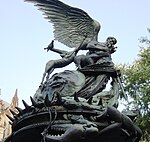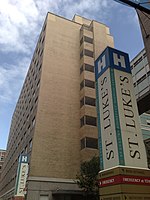Leake and Watts Services
1831 establishments in New York (state)Buildings and structures in ManhattanCharities based in New York CityOrphanages in New York (state)Social welfare charities based in the United States ... and 1 more
Use mdy dates from November 2019

Leake and Watts Services, Inc. is a not-for-profit social services agency in New York City that provides services for children and families in the areas of foster care, adoption, special education, Head Start and other related subjects. It has facilities in Yonkers in Westchester County, New York, and in the Bronx and upper Manhattan in New York City. The agency began as the Leake and Watts Orphan Asylum in Manhattan.In 2018, Leake and Watts Services was rebranded as Rising Ground. A description of the organization today is available at Rising_Ground.
Excerpt from the Wikipedia article Leake and Watts Services (License: CC BY-SA 3.0, Authors, Images).Leake and Watts Services
Cathedral Parkway, New York Manhattan
Geographical coordinates (GPS) Address Nearby Places Show on map
Geographical coordinates (GPS)
| Latitude | Longitude |
|---|---|
| N 40.8025 ° | E -73.962777777778 ° |
Address
Citi Bike - Cathedral Pky / Amsterdam Av
Cathedral Parkway
10025 New York, Manhattan
New York, United States
Open on Google Maps










